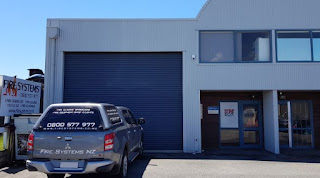Fire Alarm Testing
The Key To Preventing Fires - Fire Alarm Testing
The process:
The process of fire alarm testing is relatively simple and incredibly important. A fire in a building not only presents a chance to cause significant damage to the structure but also presents a threat to occupants' safety. The first step in fire alarm testing will be to make sure all smoke and heat detectors are powered. All batteries in these units or electrical panels they may be attached to must be tested regularly. This is the first and most obvious step, but many fires do occur simply because the heat or smoke detector had a dead battery.
Along the same lines, all elements of the fire detection system will be checked to make sure that power is delivered and all aspects of the system are powered. This includes making sure all heat and smoke detectors have fully charged batteries, that fire panels and electrical units are fully powered and operational, that all sounds and alarms and speaker systems are also powered.
In relation to this, the next step in fire alarm testing will be to make sure that all sounds and alarms are working. Some systems have sounds delivered via bells, and other systems have sounds provided via speakers. The sound sent through the speakers might be a bell simulation or a distinct fire alarm sound. Many systems will also allow users and firefighters to communicate with the occupants of the building. As an example, in an apartment building there might be speakers in individual flats, and through these speakers a firefighter can communicate to the residents of the building, notifying them that an alarm has been activated and investigation is, and all residents are to remain in their flat. The firefighter can then inform residents of any resolution, such as the alarm has been investigated, no fire was found, and all residents are safe to continue about their business. These speakers are relatively new within the past 10-20 years and are more commonly used in larger buildings, especially residential units.
All fire panels which indicate where the alarm was first set, what floor, what area of the building, etc. will be tested to make sure they have power and are functioning. All electrical panels which source the fire alarm system will also be tested for power and functionality. As part of the overall testing process, a simulated escape might be made mandatory for the occupants of the building just to make sure all escape routes are known.
Fire alarm testing steps can be summed up as: smoke and heat detectors functioning and powered, bells and alarms functioning, and all indicator panels working.



Comments
Post a Comment